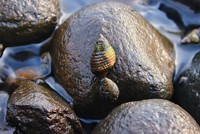Advertisement
Grab your lab coat. Let's get started
Welcome!
Welcome!
Create an account below to get 6 C&EN articles per month, receive newsletters and more - all free.
It seems this is your first time logging in online. Please enter the following information to continue.
As an ACS member you automatically get access to this site. All we need is few more details to create your reading experience.
Not you? Sign in with a different account.
Not you? Sign in with a different account.
ERROR 1
ERROR 1
ERROR 2
ERROR 2
ERROR 2
ERROR 2
ERROR 2
Password and Confirm password must match.
If you have an ACS member number, please enter it here so we can link this account to your membership. (optional)
ERROR 2
ACS values your privacy. By submitting your information, you are gaining access to C&EN and subscribing to our weekly newsletter. We use the information you provide to make your reading experience better, and we will never sell your data to third party members.
Environment
Harm From Mercury Passes Down Through Generations
Ecotoxicology: Maternal and dietary exposures in American toads have lethal effects when combined
by Charlie Schmidt
March 31, 2011

Traditional ecotoxicology studies that probe one toxic exposure at a time may consistently underestimate real-world hazards. That's the conclusion of researchers who studied the effects on tadpoles of mercury passed from a mother's tissues to her eggs and of mercury in the tadpoles' diet. The effects were synergistic and deadly: Only tadpoles exposed to both sources of mercury died off in large numbers (Environ. Sci. Technol., DOI: 10.1021/es104210a).
Scientists who study how contaminants affect juvenile development in birds, fish, and amphibians typically look at just one of two exposure routes: contaminant transfer from mother to eggs or environmental exposure from water or diet. "Both routes are usually tested in isolation even though they often coincide in nature," says William Hopkins, an associate professor of fish and wildlife conservation at Virginia Polytechnic Institute and State University.
Scientists had found that juvenile American toads exposed to mercury by either route can suffer sublethal consequences. To combine exposures, Hopkins, Christine Bergeron, and their colleagues collected toads from a mercury-contaminated river near Waynesboro, Va. In the laboratory, they divided eggs harvested from breeding pairs into two groups: a non-contaminated reference group and a contaminated group. Hatchlings from each group then ate clean control diets or diets treated with mercury at one of two concentrations, each no higher than what's ordinarily measured in Waynesboro, Hopkins says.
The researchers then looked at the two exposure routes individually. Tadpoles hatched from contaminated eggs suffered more toxicity than did tadpoles that hatched from clean eggs but ate mercury-spiked food. The maternally exposed tadpoles swam more slowly and took a longer time to develop into adult toads.
But the combined effect was lethal at the higher dietary concentration to tadpoles from contaminated eggs. These animals experienced 50% greater mortality compared to tadpoles hatched from clean eggs that ate clean food. Hopkins says he doesn't know how the two routes interact to produce synergistic effects. The two routes of exposure cause different sublethal effects, he says. "That suggests they act on different physiological processes, or that the timing of exposure is influential with respect to outcome," he says. "But the net result of these multiple disruptions is mortality."
Jason Rohr, an assistant professor of integrative biology at the University of South Florida, in Tampa, says that this could be the first study to combine these routes of exposure in amphibians. But Rohr cautions that in the real world, the results apply only to situations where the dual exposures occur. And that varies, he adds, according to species mobility: In some species, offspring may move away from where their mother laid eggs, and toward or away from contaminants.
"This is a great foundational study but it's just a beginning," Rohr says. "We need to see if the results hold up with other species and other chemicals."





Join the conversation
Contact the reporter
Submit a Letter to the Editor for publication
Engage with us on Twitter